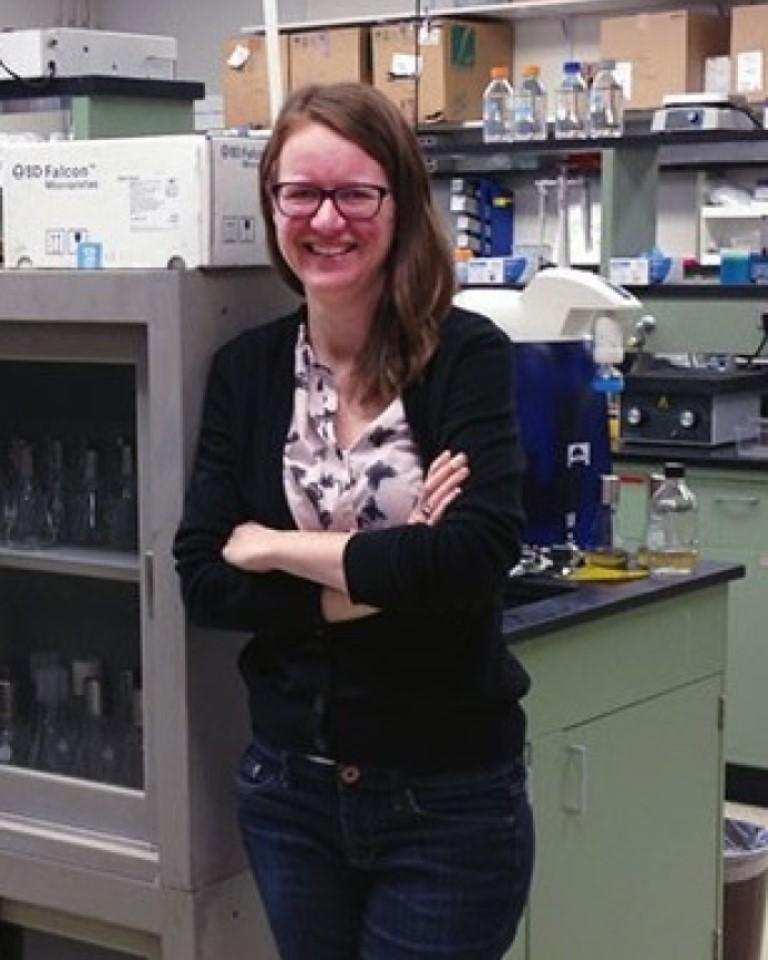Josephine Chandler

MENTOR SPOTLIGHT | MARCH 2019
Department: Molecular Biosciences
Describe your work in a few sentences that we can all understand: My lab is interested in the social lives of bacteria – how bacteria communicate, cooperate, and compete with one another. Sociality is an important part of bacterial life and yet we know very little about it. Once we understand bacterial social interactions better, we can develop strategies to manipulate these interactions so we can, for example, change the course of a bacterial infection to improve patient outcomes.
Q: How did you first get interested in doing research or creative work?
A: When I started college, I took a job as a dishwasher in a lab studying fruit flies. I fell in love immediately. They started me out literally washing dishes, but eventually I moved to helping maintain and make new fly lines. I found I really loved working at the bench and thinking through the experiments. I also fit right into the environment – everyone was an analytical thinker like me, very motivated and excited about their work, and the hours were really flexible - great for working around classes and the rest of my schedule.
Q: What do students in your discipline learn by doing research that they wouldn’t learn by just taking classes?
A: Research really teaches students to think critically and understand the scientific process, both of which are increasingly important in our society. By carrying out their own experiments, students learn to understand the process behind the discoveries we hear about in the news - and how to evaluate if those discoveries are well-founded, or not! They also learn to appreciate where the information came from that we teach them in class – we didn’t just ‘know’ it, we learned about it through research!
Q: What do you find to be the most exciting part of doing research or creative work? What makes this line of work meaningful and interesting to you?
A: When I worked at the bench, I was driven by the prospect of making new discoveries - identifying an awesome question that needs asking, then figuring out how to test that question. I still love both of these things, but now it’s become even richer as I experience this process through my students. It’s wonderful to see students develop their own technical and critical thinking skills, and learn how to be independent scientists.
Q: What advice do you have for undergraduates interested in doing research in your field?
A: If you are interested in research, it is really important to get into a lab and experience it for yourself – not only so you can decide if you like it (it’s not for everyone!), but also so you have the experience you need for whatever becomes the next step of your career. Start early and reach out to lots of people – you might not get a positive response or any response at all at first, and you’ll need to be persistent to succeed. That is ok, because persistence is also important in research!
Q: For many students, doing research or a larger creative project is the first time they have done work that routinely involves setbacks and the need to troubleshoot problems. Can you tell us about a time that your research didn’t go as expected? Or about any tricks or habits that you’ve developed to help you stay resilient in the face of obstacles?
A: One time when I was in graduate school, I was presenting results of a difficult project to another professor in the department. I did a lot of complaining about all the setbacks I had. The professor I was talking to smiled and said, “without those setbacks, you never would have learned as much as you did!” It’s true – it’s important to accomplish something, but it’s just as important that you are learning something, and the setbacks are sometimes the best way to learn.
Q: How do you spend your time outside of work?
A: My two kids keep me very busy! I am a girl scout co-leader for my oldest, and enjoy chasing my toddler around parks and playgrounds. I also like sewing. I have been known to sew clothes for myself and my family using very surprising prints and color combinations – I love picking out the fabrics and putting them together to make really unique outfits.